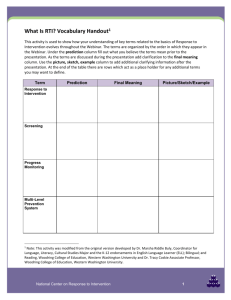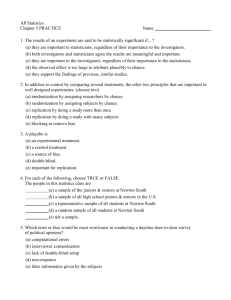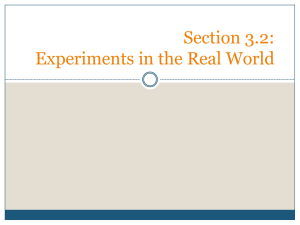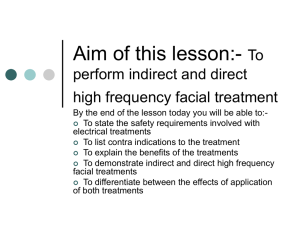Program Announcement and Call for Proposals: Threatened and
advertisement
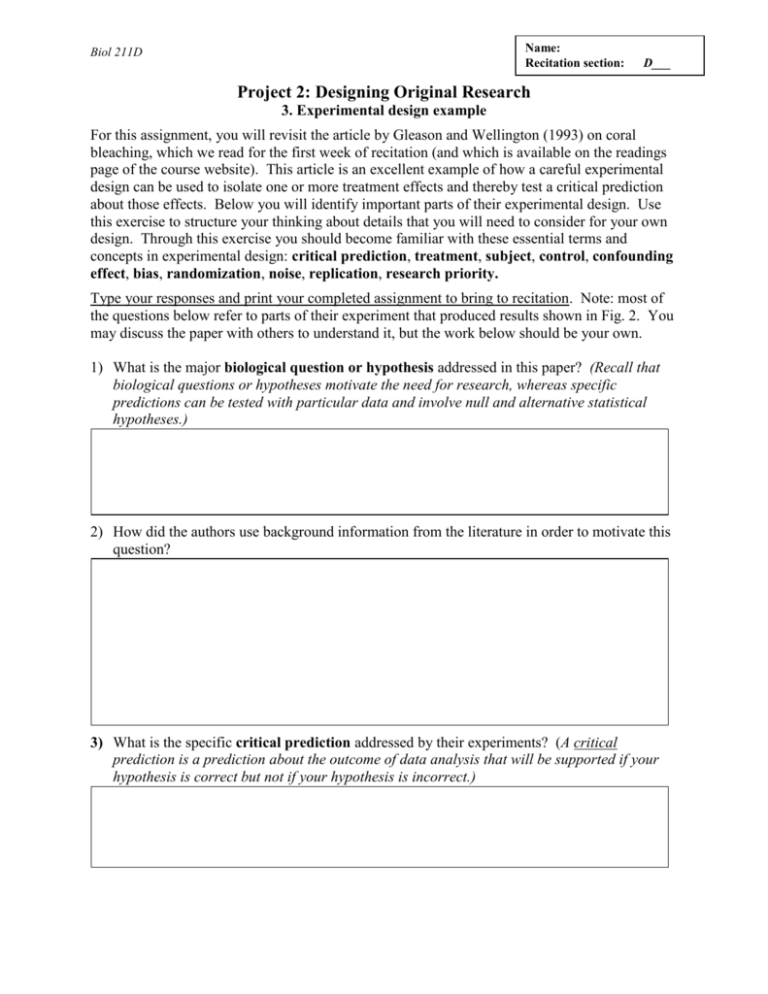
Name: Recitation section: Biol 211D D___ Project 2: Designing Original Research 3. Experimental design example For this assignment, you will revisit the article by Gleason and Wellington (1993) on coral bleaching, which we read for the first week of recitation (and which is available on the readings page of the course website). This article is an excellent example of how a careful experimental design can be used to isolate one or more treatment effects and thereby test a critical prediction about those effects. Below you will identify important parts of their experimental design. Use this exercise to structure your thinking about details that you will need to consider for your own design. Through this exercise you should become familiar with these essential terms and concepts in experimental design: critical prediction, treatment, subject, control, confounding effect, bias, randomization, noise, replication, research priority. Type your responses and print your completed assignment to bring to recitation. Note: most of the questions below refer to parts of their experiment that produced results shown in Fig. 2. You may discuss the paper with others to understand it, but the work below should be your own. 1) What is the major biological question or hypothesis addressed in this paper? (Recall that biological questions or hypotheses motivate the need for research, whereas specific predictions can be tested with particular data and involve null and alternative statistical hypotheses.) 2) How did the authors use background information from the literature in order to motivate this question? 3) What is the specific critical prediction addressed by their experiments? (A critical prediction is a prediction about the outcome of data analysis that will be supported if your hypothesis is correct but not if your hypothesis is incorrect.) Name: Recitation section: D___ 4) Define the subject (or experimental unit) used in their experiments. (A subject is the independent entity to which a treatment is applied. The replication for the experiment is based on the number of subjects to which the treatments were independently applied.) 5) Describe the treatments used in their study. Number the treatments. (A treatment is the set of conditions applied to a subject.) Then list the variables that were manipulated among treatments. (A variable is a factor that varies among treatments, usually by systematic manipulation. Hint: there are three variables.) 6) The effect of a particular variable can be isolated (or revealed) by comparing two treatments in which the variable of interest is the only factor that differs. Identify at least three comparisons between treatments that allowed the experimenters to isolate the effect of one variable while controlling for other variables. Make sure that each comparison that you identify isolates a different variable. Comparison: Isolates the effect of this variable: vs. vs. vs. 7) The manipulation that involved blocking vs. not blocking UV light involved a confounding effect. How would you have better designed the treatments to avoid this effect? (A confounding effect occurs when more than one factor is allowed to differ between treatments, making it difficult to ascribe the effect of the treatment to one factor or the other.) 2 Name: Recitation section: D___ 8) How did the experimental design help to minimize the effect of bias in their results? (“Bias” can occur when subjects are assigned in a way that could lead to an unintended difference between treatments. For example, if an experimenter assigned mostly males to one treatment and mostly females to another, differences between the two treatments could be due to sex rather than to the treatment. In experiments, bias is usually reduced through randomization.) Explain how randomization was used in the experiment. 9) How did the experimental design help to minimize the effect of statistical noise in their results? (“Noise” results from the fact that subjects naturally vary in their response to a treatment. To get a precise estimate of the average response, the treatment is usually replicated with many subjects.) Describe how replication was used in the experiment. For the questions below, sketch your graphs on a separate sheet of paper, but type explanations here. Note: The graphs you sketch will show various possible outcomes and you will explain how you would interpret them. These types of graphs and explanations serve as an example of what would be included in the “Possible results” section of a research proposal. 10) Was the critical prediction supported? Sketch a graph of the basic result and explain how it supports their prediction. 11) Sketch and explain a simple graph of the results they would have gotten if UV light did not induce bleaching. 12) Sketch and explain a simple graph of the results they would have gotten if visible light induced bleaching. 3
